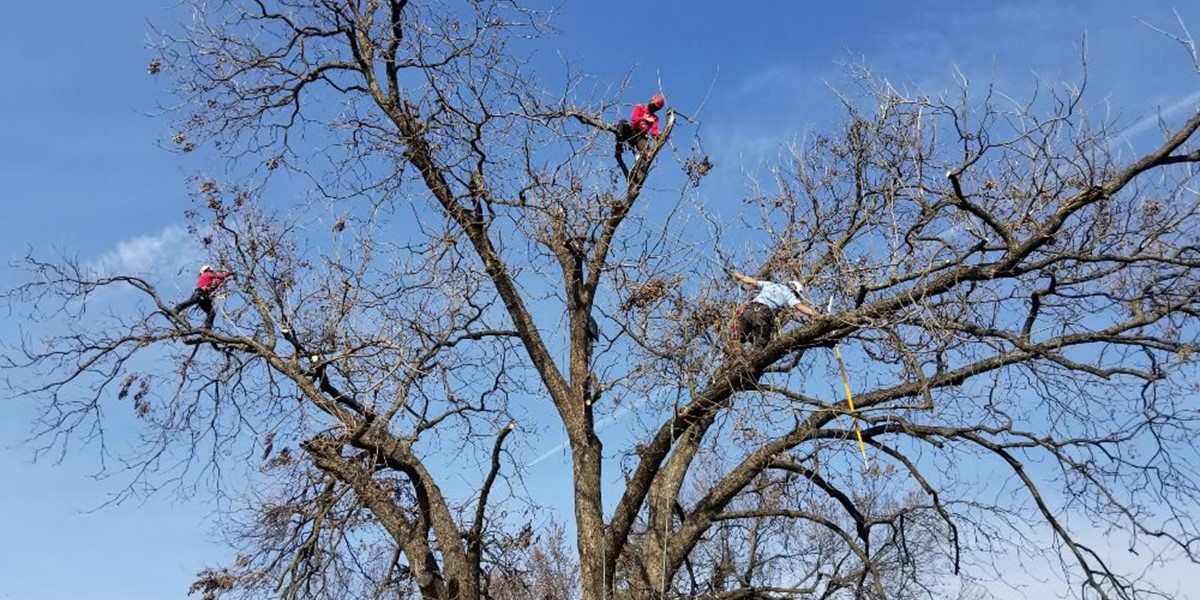
Tree Care During the Dormant Season

The dormant season is a good time to prune many of our shade and ornamental trees.

Published January 20, 1997 By KEVIN BASSETT and RUSSELL PETERS
Pathologist's Corner
Winter is almost upon us and many times our trees go without attention. The dormant season is actually a very good time to prune many of our shade and ornamental trees. One of the most obvious things we deal with this time of year is mistletoe.
This plant is a parasite that derives its nutrients and moisture from the tree it has infected. Infections left to develop in trees can lead to weakened areas in larger limbs thus resulting in limb failure. Once the mistletoe plant matures, seeds are produced which spread throughout the tree canopy, causing multiple infection sites. Our mistletoe control program is directed toward removing entire branches or twigs infected with mistletoe. When large limbs or limbs critical to the structure of the tree are infected we remove the mistletoe only, however regrowth occurs. Mistletoe removal will be necessary about ever two to three years on average. This will address regrowth of old infections as well as new infections that will constantly occur on susceptible species.
The North Texas area has a number of susceptible species, many of which are growing in our residential landscapes. Cedar Elm by far is the most susceptible high value species where we see mistletoe infections. Other species include American Elm, Hackberry, Mulberry, Ash, and Bois d’ Arc. Winter is also a common time for new infections to occur as birds will consume the fruit that has now matured, and deposit seeds throughout the canopies of susceptible species. We can remove mistletoe anytime of the year. However, it is much more visible during the dormant season and in most cases more easily removed this time of year.
Another important process that can be forgotten this time of year is deep root fertilization. Our process utilizes a high quality organic fertilizer solution applied directly to the root area of our urban shade trees. This material will be available for uptake by the tree or plant for six to eight months. Many of us forget our southern soils rarely, if ever, freeze and soil temperatures are generally quite favorable for root growth and development this time of year. The mixture we use is applied under pressure which aids in aeration of the root zone as well as uniform distribution throughout the root area of our trees. Many times the lack of oxygen alone can be the most limiting element in healthy root growth. This is especially true in the heavy clay soils of North Texas.
Call one of our qualified I.S.A. Certified Arborists to assist you with a plan and an estimate of cost for mistletoe removal and/or deep root fertilization.

